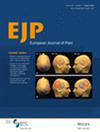Hypercapnia Reduces Perceived Heat Pain in Healthy Subjects
Abstract
Background
Danger signals modulate pain perception. Both amplification and attenuation of perceived pain are observed in healthy subjects exposed to danger signals, such as transient threats of an imminent electrical shock. However, exposure to danger signals in real life typically is not transient but constant over minutes to hours. Here, this was experimentally achieved by administering hypercapnic air (7.5% CO2). The primary objective was to investigate whether perceived heat pain would be differentially modulated during this intervention compared to regular air administration. The secondary objective assessed the potential differences of such a modulation with respect to heat intensity level.
Methods
Thirty-eight participants (19 women) received two air mixtures (hypercapnic and regular air) for 13 min each, during which 18 (6 × 3) noxious heat stimuli of three different intensities were applied to the calf and rated on two scales (intensity and pleasantness/unpleasantness). Psychological and physiological states were compared between conditions using the body sensations questionnaire, self-assessment manikins, heart rate, and galvanic skin response. Statistical analyses were performed using Bayesian estimation testing.
Results
Between-condition differences were statistically meaningful for all heat intensity levels, always showing reduced pain perception during hypercapnia compared to normocapnia. The magnitude of the observed hypoalgesia did not depend on heat intensity levels.
Conclusions
The presence of a continuous physiological danger signal results in hypoalgesia. Future studies need to determine whether the present results only hold for hypercapnia in healthy subjects or are generalisable to interactions between pain perception and continuous physiological danger signals in clinical pain populations.
Significance Statement
It was shown that hypercapnia leads to reduced perception of noxious heat stimuli. If confirmed by neural data in future studies this could help to better understand the interaction of pain perception and continuous physiological danger signals in clinical pain conditions, potentially allowing for improved treatment of affected individuals.


 求助内容:
求助内容: 应助结果提醒方式:
应助结果提醒方式:


